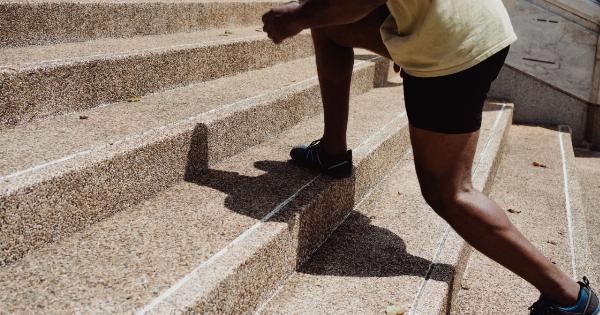Flat feet, also known as fallen arches, is a common foot condition that can cause discomfort and pain. It occurs when the arch of the foot collapses, leading to the entire sole of the foot coming into contact with the ground.
While flat feet are usually a result of genetics, they can also be caused by factors like age, obesity, injuries, and certain medical conditions. Fortunately, there are several steps you can take to alleviate the symptoms of flat feet and improve your foot health. In this article, we will discuss five simple steps to fix flat feet.
1. Arch Exercises
One effective way to address flat feet is by performing arch exercises. These exercises help strengthen the muscles and tendons that support the arch of your foot. Some simple arch exercises include:.
- Arch Raises: Stand barefoot and slowly raise your arches as high as possible, then lower them back down.
- Towel Curls: Place a small towel on the floor and try to scrunch it up using only your toes.
- Toes Spread: Sit with your feet flat on the floor and spread your toes as wide as possible. Hold the position for a few seconds and repeat.
By regularly incorporating these exercises into your routine, you can strengthen the muscles in your feet and help improve the arch.
2. Supportive Footwear
Choosing the right footwear is crucial for individuals with flat feet. Look for shoes that provide adequate arch support, cushioning, and stability. Avoid high heels and sandals, as they offer little support to the feet.
Instead, opt for running shoes, stability shoes, or orthotic inserts that are specifically designed for flat feet. These types of footwear can help control overpronation and provide the necessary support to alleviate flat feet symptoms.
3. Stretching Exercises
Regular stretching can play a significant role in improving the condition of flat feet. Stretching exercises help loosen the tight muscles and tendons in the feet and calves, reducing the strain on the fallen arches.
Some beneficial stretching exercises for flat feet include:.
- Calf Stretch: Stand facing a wall with one foot in front of the other. Keep the back leg straight and slowly lean forward, stretching the calf muscle. Hold the stretch for 20-30 seconds and repeat on the other side.
- Plantar Fascia Stretch: Sit on a chair and place the affected foot over the opposite knee. Grab your toes and gently pull them back towards your shin until you feel a stretch in the arch of your foot. Hold for 20-30 seconds and repeat a few times.
It is essential to perform these stretches regularly to experience the benefits and reduce the discomfort caused by flat feet.
4. Weight Management
Excess body weight can worsen the symptoms of flat feet, as it puts additional stress on the feet and arches. Maintaining a healthy weight can help relieve the discomfort and pain associated with fallen arches.
Incorporate a balanced diet and regular exercise into your lifestyle to achieve and maintain a healthy weight. Losing even a small amount of weight can make a significant difference in the symptoms experienced due to flat feet.
5. Use Orthotic Inserts
If your flat feet cause significant pain and discomfort, orthotic inserts can provide additional support and help alleviate the symptoms. These inserts can be custom-made to suit the shape of your feet and provide the necessary arch support.
Alternatively, you can opt for over-the-counter arch supports that offer cushioning and stability. By wearing orthotic inserts regularly, you can reduce pain, improve foot alignment, and support the arches.
A healthy and pain-free life with flat feet is possible by following these simple steps. Incorporate arch exercises, wear supportive footwear, perform stretching exercises, manage your weight, and consider using orthotic inserts.
However, if the pain and discomfort persist, it is advisable to consult a healthcare professional for further evaluation and guidance.






























